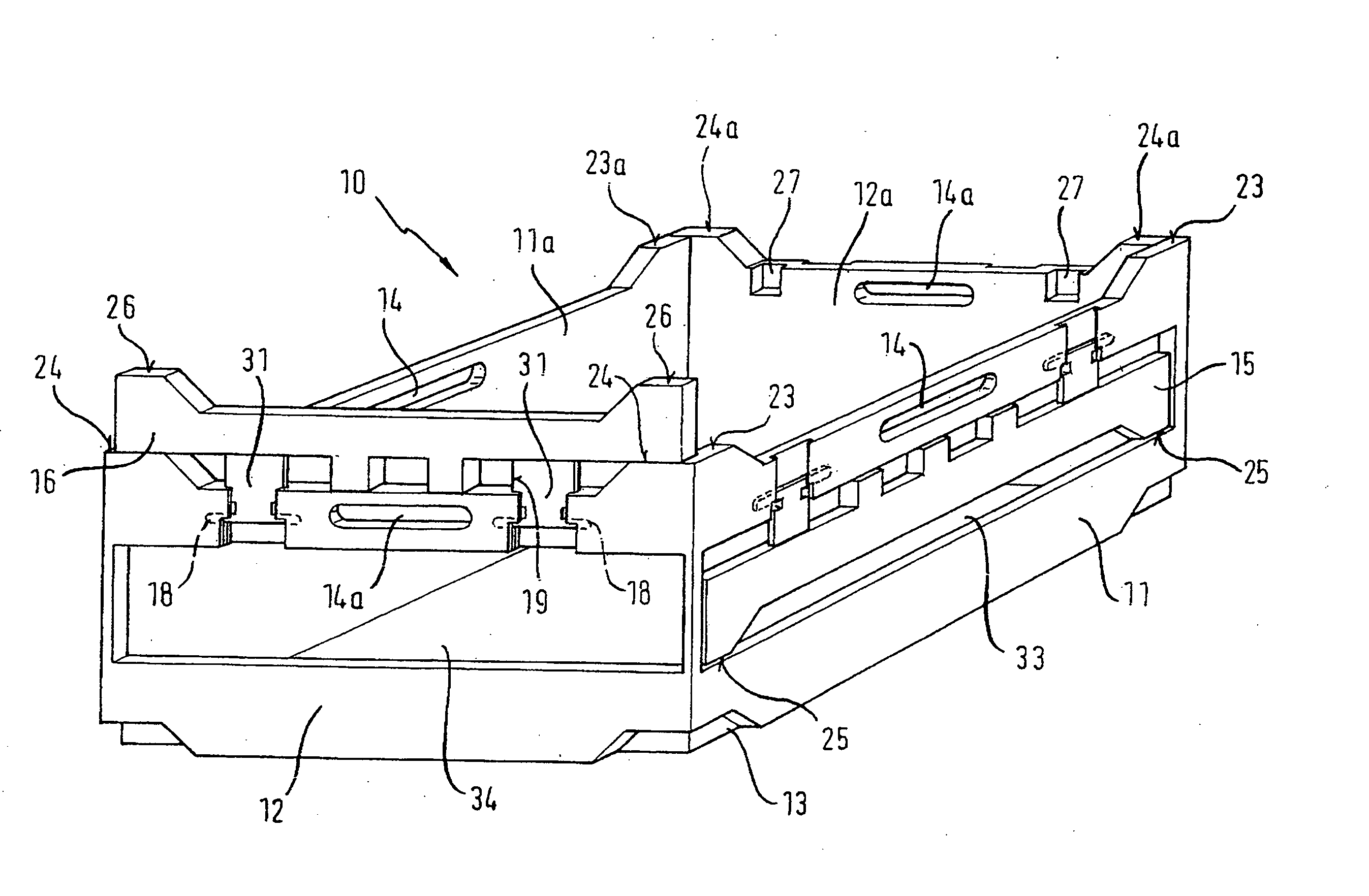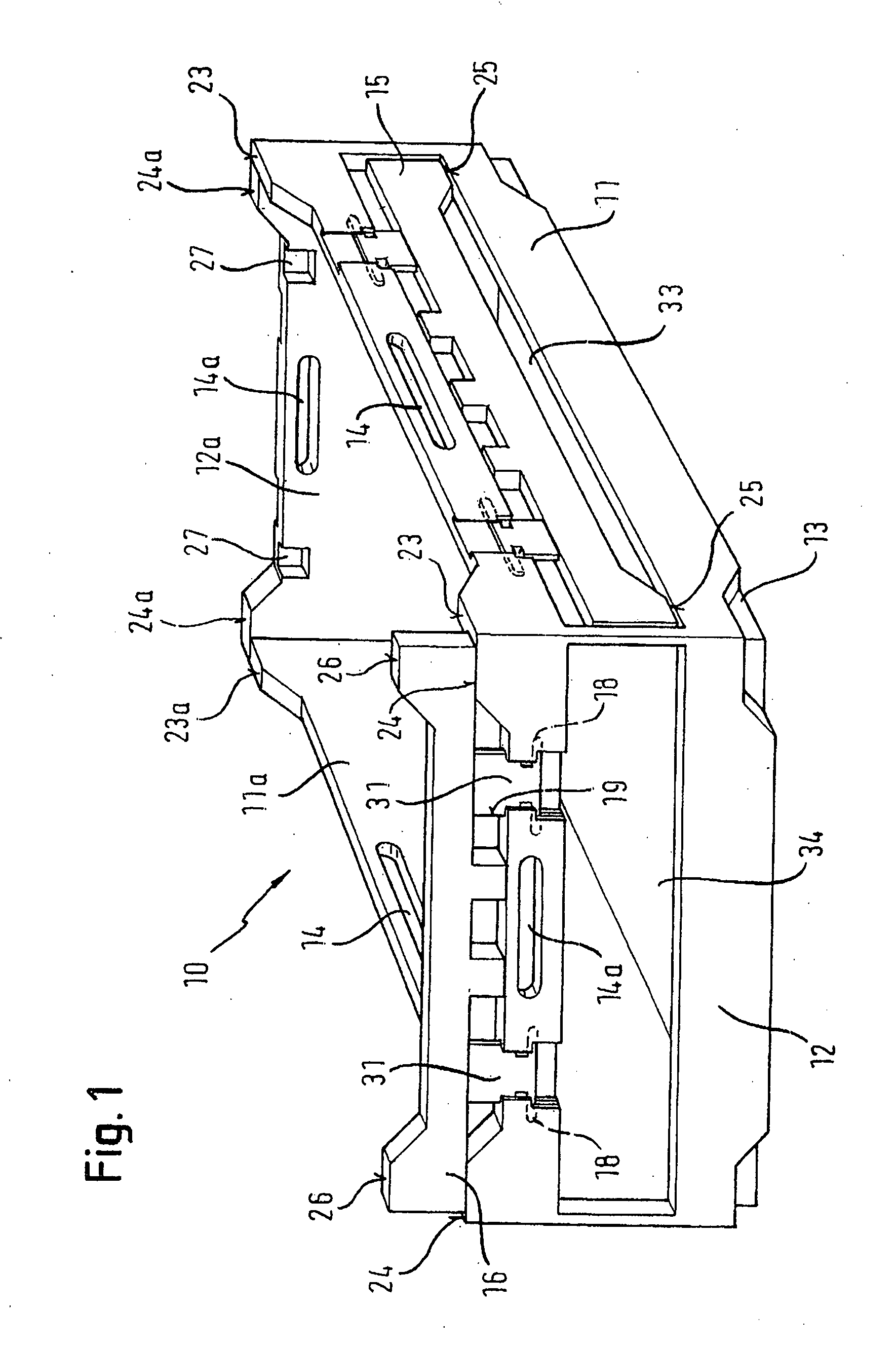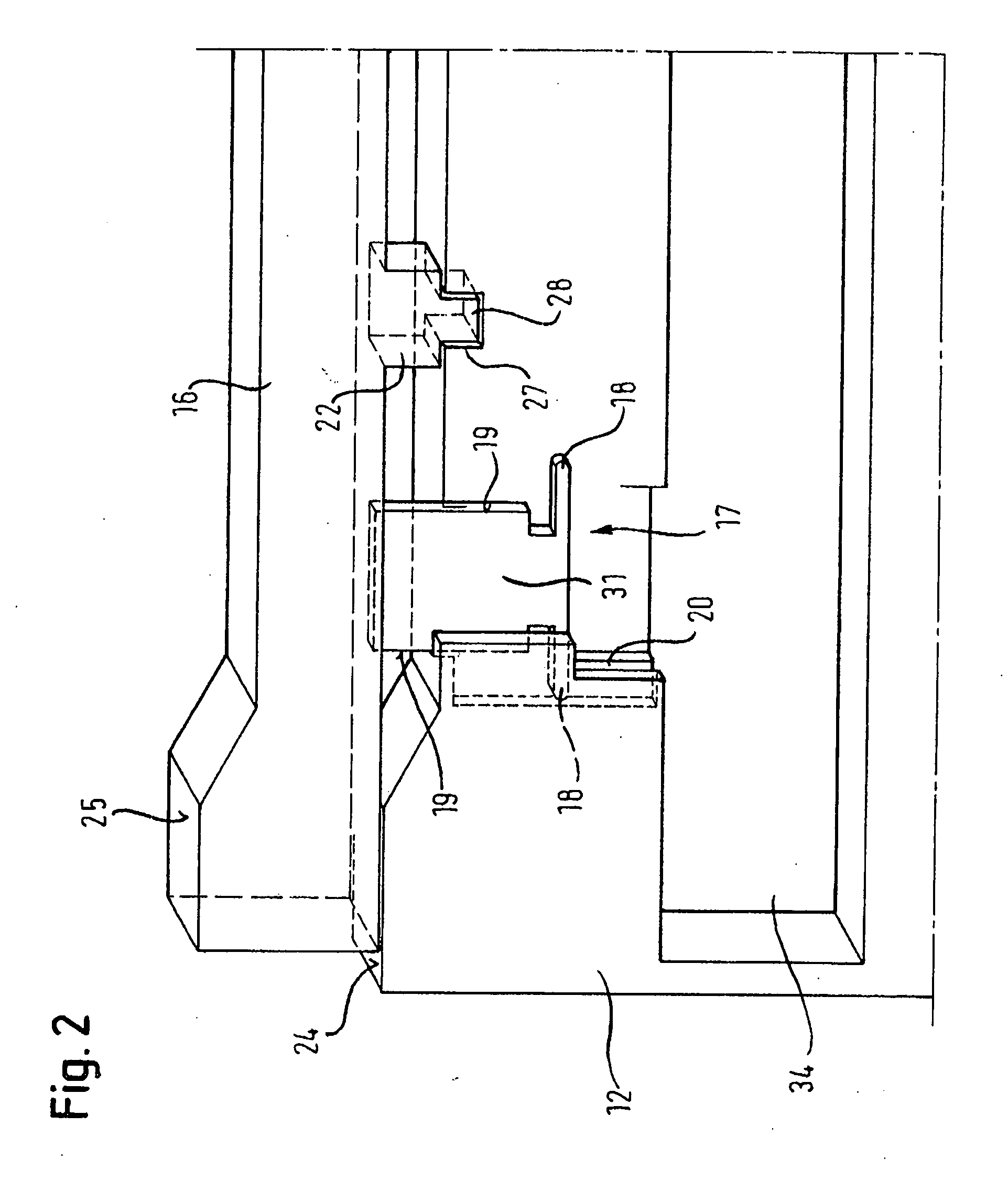[0014] A particular
advantage of the invention is obtained when the side wall elements of the stackable crate are likewise of the folding type. In this case, the side wall elements can be folded down from an upright position, in which the side wall elements are substantially perpendicular to the bottom element, into a horizontal position relative to the bottom element in which the side wall elements extend substantially in parallel to the bottom element. Preferably, the dimensions of the side wall elements and of the attachment elements have been chosen such that the attachment elements can be integrated into the side wall elements so as to prevent them from protruding or from protruding substantially over the dimensions of the side wall elements. As used herein, the term “not substantially” shall mean that, at the most, the attachment elements will protrude over the dimensions of the side wall elements only to such an extent that all side wall elements can be folded down essentially in parallel onto the bottom element so as not to interfere with an easy and compact stacking of the collapsed crates. This also requires the mechanisms needed for erecting and folding to be capable of being integrated into the side wall elements in such a manner that they will not protrude over the side wall elements in the direction of their thickness.
[0015] When the attachment elements are folded down, they must not or not substantially protrude over the thickness of the side wall elements in their upright position so as not to or not substantially increase the outer dimensions of the crate. The preferred outer dimensions of the crate are 600 mm×400 mm which is a quarter of the surface area of a standard Euro
pallet. However, the invention can also be used with smaller crates, such as crates of a size of 400 mm×300 mm.
[0016] For stacking the crates, a special profile is provided at the top of the side wall elements which will support the corresponding circumferential regions on an underside of the bottom element and will thus ensure that the crates can be stacked without shifting. To enable the crates to be stacked without shifting even with raised or moved-up attachment elements, the top sides of the attachment elements have to match up with the profile on the underside of the bottom element in those areas where they contact the underside of the bottom element of a crate on top of them. In other words: Essentially the same profile is provided at the top of the attachment elements as at the top of the side wall elements or as the inverted profile of the circumferential edge on the underside of the bottom element.
[0017] To ensure that crates of this type can be stacked easily without shifting, the corner portions of adjacent side wall elements are preferably specially designed. To also guarantee safe stacking without shifting of the crates with the attachment elements in place, at least parts of these corner portions have to find a match in the attachment elements. For this purpose, however, it is not necessary for two adjacent attachment elements to contact each other in the corner areas or even to be connected to or locked with each other—even if this falls under the inventive concept. Even if it is possible to design the attachment elements such that they completely match the corner areas of the side wall elements, it will suffice for most cases to only replicate portions of these corner areas to ensure stability and prevent shifting of the crates, and to abstain from connecting the attachment elements in the corner areas.
[0018] To ensure stable and reliable stacking, however, the attachment elements must be fixed in their folded-up position. In this case, the attachment elements may directly bear on the top sides of the side wall elements, for example in the direction of gravity; and guiding in directions which run in a plane perpendicular to gravity can be accomplished through recesses provided in the side wall elements and / or by mounting the attachment elements on the side wall elements by means of joints. Preferably, the recesses in the side wall elements are designed such that no additional sliders are required for their production in an
injection moulding process. For example, the attachment elements can be folded up by pivoting them upward by 180° such that, in its pivoted-up position in the direction of the pivoting movement, the attachment element will bear directly on a stop provided on the side wall element, and will be prevented from pivoting downward again by
detent lugs which accommodate a
nose or a guide rod of the attachment element. At the same time, mobility of the attachment element in the direction of the pivot axis will be prevented by suitably designed support walls, stops and recesses.
[0019] Furthermore, to ensure good stackability of the crates with the attachment elements folded up, it is obvious that the top sides of the attachment elements must extend in a common plane in parallel to the bottom element. In this context it is irrelevant whether the side wall elements are of the same height since this can be compensated by different heights of the attachment elements. Even if it is normally assumed that the top sides both of the side wall elements and of the attachment elements, i.e. the respective bearing surfaces for a bottom element of another crate placed atop the present crate, are each arranged in a common plane extending in parallel to the bottom element, the invention shall also encompass embodiments of transport containers in which the top sides or bearing surfaces both of the side wall elements and of the attachment elements do not each extend in a common surface in parallel to the bottom element. Thus a crate is conceivable in which only the shorter side walls, i.e. the front walls, have the function of supporting and guiding the crate placed on it. If a crate is used for example in which the height of the front walls is half of the length of the crate, and if this crate is folded such that opposing side wall elements, in a horizontal position thereof, will be in the same plane, i.e. the folded-down side wall elements will not overlap, then the maximum height of the long side wall elements will amount to half of the width of the crate and will thus be, in the case of a rectangular crate, lower than the front walls.
 Login to View More
Login to View More  Login to View More
Login to View More 


